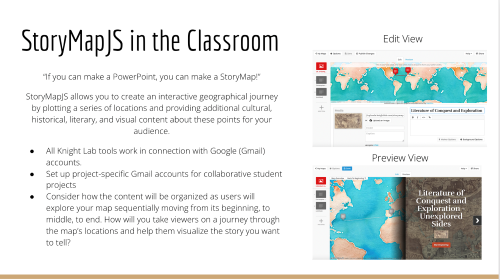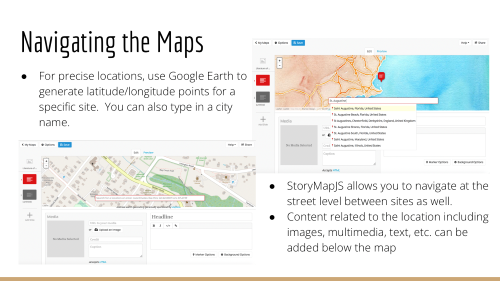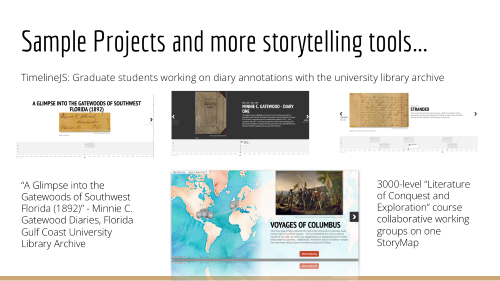Close Encounters of the Digital Kind: Professional Development and the Digital Humanities in the 21st-Century
November 23, 2021 / Dr. Jordan Von Cannon / Tags: 21stCentury, Transatlantic Departures, DigitalHumanities, SSAWWConference
In November 2021, I attended my first in-person conference since the beginning of the pandemic. The Triennial Conference for the Society for the Study of American Women Writers only meets once every three years, so many in our scholarly community had agonized over whether an in-person meeting would even be possible. Strangely enough, I was participating on an in-person panel on digital humanities (dh) scholarship and tools in the classroom. While we have all become more adept at incorporating digital platforms into our teaching these last two years, when I talk about “digital humanities in the classroom,” I don’t mean “English majors discussing books over Zoom.” Rather, digital humanities, in the form I most often engage with it in my classes, brings together computer programming, digital media, and online tools to our reading/experience of a print or electronic text.
At this year’s SSAWW conference, we also marked the official unveiling of the Recovery Hub for American Women Writers. The Recovery Hub offers support for digital humanities projects on American Women Writers at all levels. Since graduate school, I have worked on my own digital humanities project, Transatlantic Departures, an electronic edition and interactive map of Catharine Sedgwick’s 1839 trip abroad. I am encouraged to see the Recovery Hub’s dedication to projects that emerge from institutions that lack the framework of major universities for digital humanities research.
During the conference, I was thrilled to participate in a digital humanities workshop sponsored by the Recovery Hub. Our workshop invited all attendees to participate in a hands-on session that introduced instructors to a variety of digital tools they can use in the classroom or for their own research. We focused specifically on the way digital tools can help faculty promote connectivity across disciplines and respond to the increase need for virtual and online learning experiences.
While we have all become more adept at incorporating digital platforms into our teaching these last two years, when I talk about “digital humanities in the classroom,” I don’t mean “English majors discussing books over Zoom.”
For my presentation, I focused on two tools from Northwestern University’s KnightLab institute StoryMap and TimelineJS. Both are tools that I’ve incorporated into 3000-level, 4000-level, and graduate-level courses for my early and 19th-century American literature student at FGCU. I like these tools, and my students like them, because they are for the most part straightforward to learn and use.

As I walked workshop attendees through a typical assignment for StoryMap, I focused on the tool’s structure, which provides a clear framework for the content students can create with it. Each StoryMap requires taking a user through a geographical journey with the option to include text, images, and video on separate slides. While the tool allows for some flexibility and customization, it’s streamline format allows students to focus on content over coding in the sense that if they can use PowerPoint, they can learn StoryMap.

Toward the end of my workshop time, I offered a glimpse of a few other projects students and I have tackled in the course of a semester. This led to one of the more interesting questions to come out of the workshop: how do digital tools “borrow” time from other types of skill-building activities like close reading, analytical writing, and theory in the literature classroom? As participants and workshop presenters shared their experiences, I noticed that many faculty who routinely incorporate dh work into their classes didn’t see the time spent learning digital tools with students as losing time dedicated to other more traditional lessons or lectures in the classroom.

In my own research and digital humanities work, my students and I often find that our reading focus on and analytic strategies with texts shift in interesting ways when we move from “close reading” to “data mining.” Moreover, when creating a digital project that will reach a much larger, broader, and more public-facing audience than a research essay (or a conference paper), we all become more thorough and conscientious writers with a keen desire to meaningfully connect to our audience.
My experience in this workshop and the conversations that have continued to flow following the conference have reminded me that scholars and students are still learning how digital tools can change not only the way we read and digest narratives, but also what we perceive to be the narrative of a particular text. Gathering in person with my colleagues from across the country renewed my commitment to digital tools and technologies as a routine component to my courses, and I look forward to furthering my own research as I continue to build my digital edition and interactive map in Transatlantic Departures.
